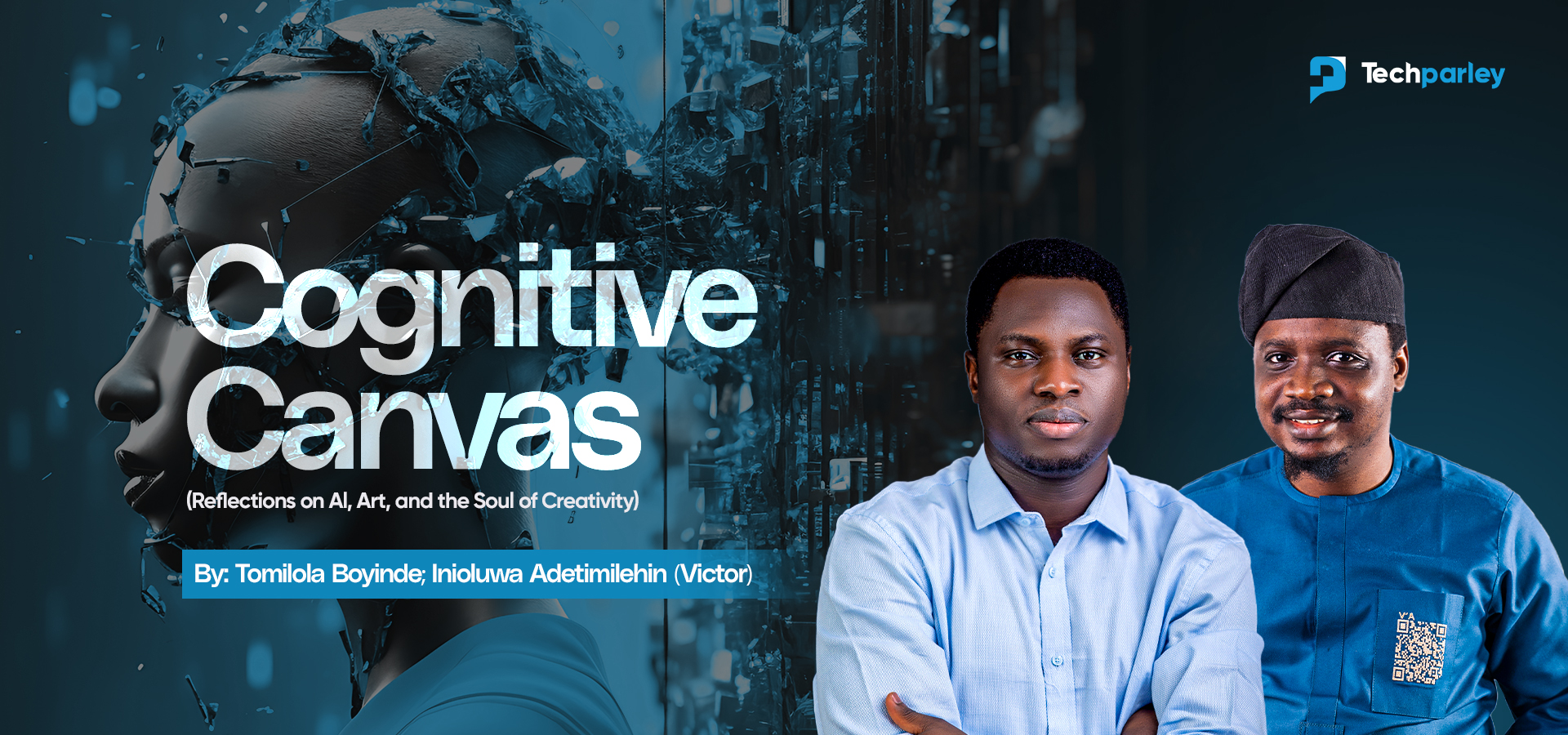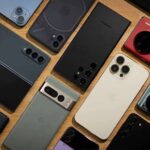If a machine paints a face that moves you, is that art or mere illusion? If you cannot trace the hand that bore it, what then confers its worth? Is it art because the artist made it, or is it art that makes the artist? Adire, hand-dyed by women who inherit the craft from mothers and grandmothers, carries not only the distinct indigo but memory and culture. Each fold tells of patience, ritual, intention. Yet markets are now flooded with cheap Chinese prints. Fast to make, easy to buy. At a glance, both resemble each other. But one has provenance. The other, a pattern without a story. This is the choice AI confronts us with. It can fill canvases in seconds. But can it carry the dignity of origin.
History has long separated art and craft by name. We remember masters like Rembrandt, van Gogh, Picasso. Their imitators, though skilled, have disappeared. Craft is replicable. Art demands signature. That distinction is not minor. Craft shows competence, the ability to reproduce faithfully, to master technique, to make something well. But art goes further. It insists on originality, on intention, on a voice that breaks from repetition. Countless apprentices mastered Rembrandt’s brushstroke, but it is Rembrandt we remember, for being a pioneer. In this sense, AI often feels like the eternal follower. It remixes what has already been said and rarely bears a name of its own.
AI’s outputs often sit closer to craft than to art. They show immense technical facility, recombining styles with precision, that in its self is not a bad thing – only that art demands more. To be a creative has always meant the ability to dialogue with tools. Michelangelo said he saw David in the marble and freed him. It is critical that the artist restrains the dialogue and the proposition of the tool, subduing it to his own will. Gen AI as the propensity to jump the gun, eager to please, it creates before it has fully captured the master’s vision.
What the evidence says about how we respond to AI art
People do not judge AI art neutrally. In controlled studies using eye tracking, participants struggled to tell AI from human paintings, yet showed an implicit bias favoring works they believed were human made. They spent more time looking at what they thought was human even when stated aesthetic ratings were similar. That suggests a negative bias at the implicit level, separate from conscious judgment. (SAGE Journals)
Authorship feelings also shift in human AI writing. Experiments show a ghostwriter effect. Users who relied on AI to generate text often did not feel like the owners or authors of the output, yet they also avoided publicly declaring AI authorship. Authorship becomes psychologically ambiguous in exactly the moments when generative systems contribute most. (ACM Digital Library)
Among working artists, the debate centers on transparency and ownership. In a survey of 459 artists, most wanted clearer disclosure about what artworks were used to train models and resisted the idea that model makers should own downstream outputs by default. The same study maps a nuanced split. Many artists see utility in AI as a tool, yet worry about market displacement and credit. (AAAI Open Access )
Law and authorship are drawing a bright line
Copyright policy in the United States currently requires human authorship for protection. The Copyright Office’s guidance states that purely machine generated material is not copyrightable, while works that include AI elements can be registered when the human contribution is both significant and disclosed. In parallel, the Office has been studying broader AI copyright issues through a formal process. Together these moves codify a simple test. Human intention and contribution remain the legal anchor. (U.S. Copyright Office)
Legal scholarship is already mapping the edge cases. One notable analysis argues that the user who sets the conditions, curates outputs and decides on inclusion can be the author in a way analogous to a photographer pressing the shutter. It does not bless every prompt as authorship. It says authorship coheres where human creative control is real, documented and meaningful. (houstonlawreview.org)
Hearing the Skeptic and the Optimist
The skeptic’s case is not a straw man. Generative AI is derivative by construction. It recombines past data and does not suffer or wrestle with meaning. If cultural markets are flooded by cheap, average outputs, human creators face a race to the bottom on speed and price. Some of the new bias evidence and authorship studies sharpen this concern. We already see audiences favoring the sense of a human hand and creators feeling less ownership when AI carries the heavy lift. These facts explain why many artists demand stricter disclosure and a firm authorship threshold. (SAGE Journals)
The generous counter is that tools have always widened art. Photography did not end painting. It pushed painters toward new questions. There is empirical and industry evidence that human machine teams outperform either alone in many domains. The collaborative intelligence framing captures a simple idea. Machines contribute scale and pattern. Humans contribute judgment and moral framing. On that view, AI is not a usurper. It is a workshop partner that will force artists toward what machines cannot replicate, namely provenance, lived experience, risk and voice. (Harvard Business Review)
What AI can and cannot do inside the arts
At the model level there is clear proof that AI can generate images humans rate as competitive with contemporary artworks. Systems like Creative Adversarial Networks explicitly try to deviate from learned styles to increase novelty and arousal. This does not settle the question of art. It only shows that statistical systems can produce artifacts that pass some human taste tests. The remaining gap is origin. Who bore the meaning and why was it made. (arXiv)
Human led, AI assisted
Perhaps the compass must remain simple. Human led, AI assisted. Use the tool for range and variation. Keep authorship where intention lives. The policy trend already points that way. The psychology suggests audiences still care about human origin even when they cannot always tell. And artists themselves are asking for transparency and real thresholds so the center of gravity stays human. (U.S. Copyright Office)
History suggests art will not die here. It will transform as it always has. But the real danger may not be that AI replaces artists. It may be that we grow comfortable with the novelty of its patterns and stop demanding art of ourselves. So the question endures. What is art? Is it art because the artist made it, or is it art that makes the artist, the artist.
Authored by
Adetimilehin Inioluwa Victor (Vic’Adex) is a serial creative and polymath who blends spoken-word poetry, painting, and communication to drive cultural innovations that advance human capital. Recognised among the top 10 contemporary spoken-word poets in Nigeria in 2015, he has since expanded his artistry into building creative safe spaces, thought leadership, and strategic communications. As an Engagement Manager at SCIDaR, he is shaping communication as a critical tool for improving social outcomes across the continent. Among his initiatives – each framed as “a Vic’Adex Concept”- are 60 Seconds Poet, Sip and Paint Abuja, and Vic’Adex Concepts & Aesthetic Resources. He continues to volunteer and contribute to social causes aligned with his creative and professional passions.
Tomilola Boyinde – Founder/CMO/Host, Bulbling247
Tomilola Boyinde is a serial creative, global marketing technologist and founder of Bulbling247, a global storytelling platform exploring creativity, technology, and innovation. He witnessed and documented the new world invention, innovation and emerging technologies exhibited at the World Expo Dubai. He has contributed to the marketing and growth of both Nigerian and global brands, blending strategy, creative storytelling, and technology to craft campaigns that resonate and inspire. With a passion for human-centered innovation, Tomilola champions untold stories, amplifies emerging voices, and drives creative solutions that connect culture, technology, and businesses globally.
The AI & Creativity series was birthed by the conversation on Bulbling247 podcast. Watch the episode here: https://www.youtube.com/watch?v=5kXatW9RMM8&t=1391s
References
- Zhou, Y. et al. Eyes can tell. Assessment of implicit attitudes toward AI art, Perception, 2023. (SAGE Journals)
- Draxler, F. et al. The AI Ghostwriter Effect. When users do not perceive ownership of AI generated text but self declare as authors, ACM Transactions on Computer Human Interaction, 2024. (ACM Digital Library)
- Lovato, J. et al. Foregrounding artist opinions. A survey study on transparency, ownership and fairness in AI generative art, AIES, 2024. (AAAI Open Access )
- U S Copyright Office. Works containing material generated by AI. Policy guidance, March 2023. (U.S. Copyright Office)
- U S Copyright Office. Artificial intelligence and copyright, study materials and updates. (U.S. Copyright Office)
- Caldwell, M. What is an author. Copyright authorship of AI art through a philosophical lens, Houston Law Review, 2023. (houstonlawreview.org)
- Wilson, H. J., and Daugherty, P. R. Collaborative intelligence. Humans and AI are joining forces, Harvard Business Review, 2018. (Harvard Business Review)
- Elgammal, A. et al. CAN. Creative adversarial networks, Generating art by learning about styles and deviating from style norms, 2017. (arXiv)





